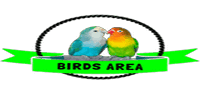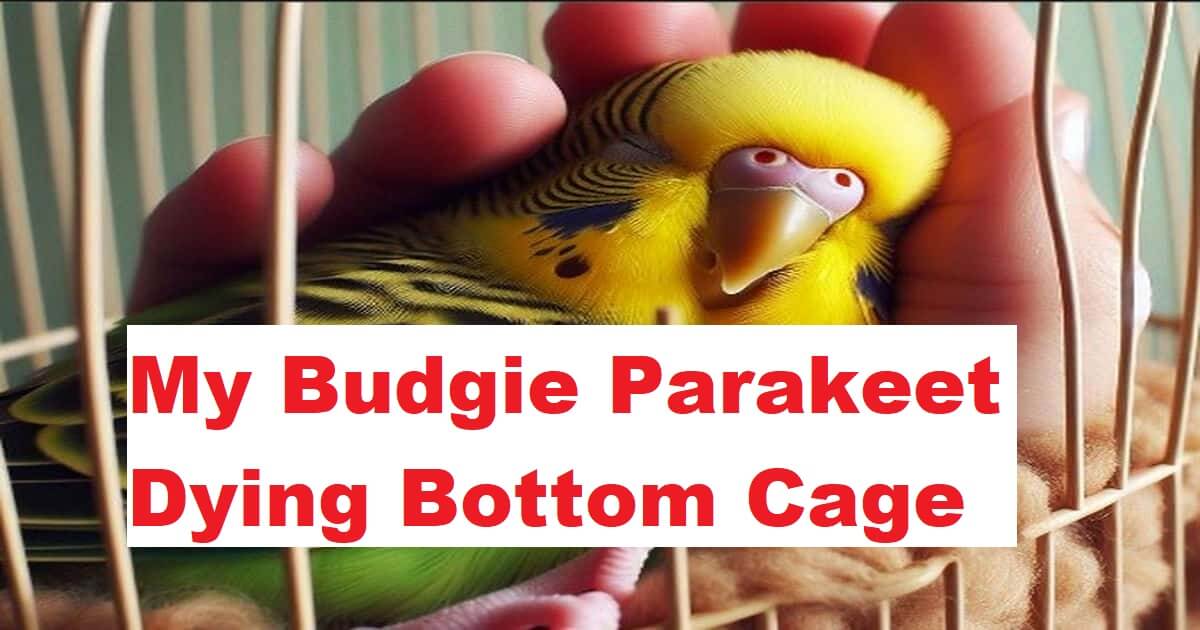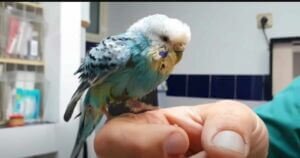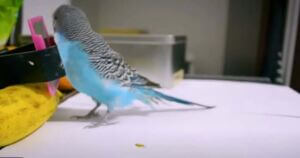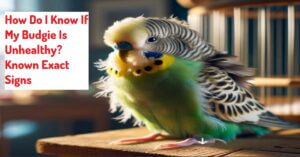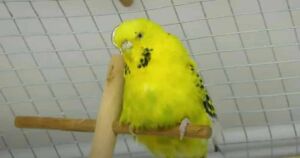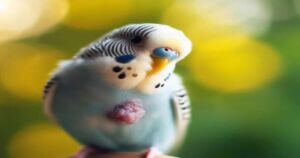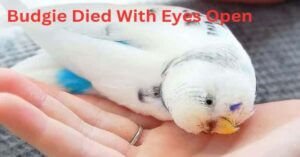Parakeet Dying Bottom Cage | Unlock the Power to Save
Seeing your parakeet lying at the bottom of its cage is really upsetting. It usually means something’s not right.
Parakeets, or budgies, sitting at the cage’s bottom could be sick or too stressed. Lots of things can make a parakeet feel bad. Maybe they’re not eating right, not moving enough, their home isn’t set up properly, or they’ve been around something toxic.
To stop or fix this, it’s important to know what’s causing the trouble. In this guide, I’ll walk you through the reasons your parakeet might be down and what actions you can take to make things better.
Why Is My Parakeet Dead Bottom Cage?
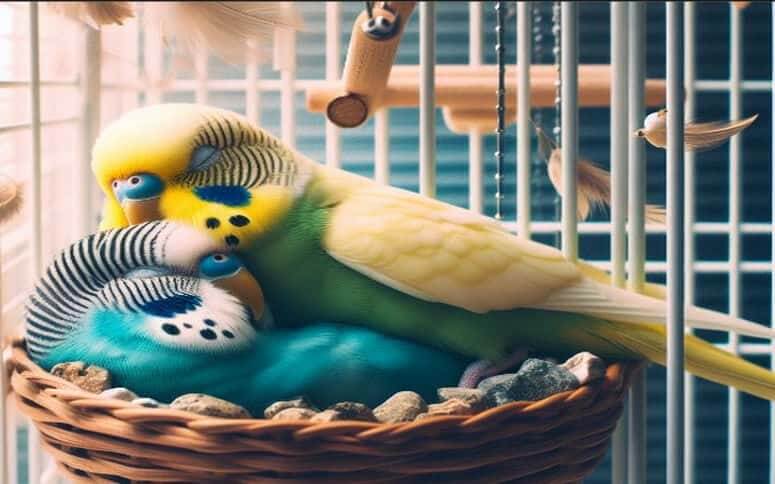
I’m really sorry your parakeet has died. Losing a pet is tough. There are many reasons why a parakeet might die. Things like how old they were, their health, and changes around them matter.
However, it’s hard to say exactly why without more details. Here are some things to think about:
- Health Issues: Parakeets can get sick just like us. Illnesses, infections, or health problems might cause death. If you noticed they were acting differently, eating less, or looking unwell, it could be a sign.
2. Where They Lived: Their home needs to be safe and comfy. Too hot, too cold, or around bad stuff could hurt them.
3. Food: Eating right is key for parakeets. Not getting the right food can make them weak and sick.
4. Stress or Hurt: Big changes, new pets, or scary things can stress them out. Getting hurt badly might also be a reason.
5. Age: Parakeets have a lifespan. If yours was pretty old, it might have been their time.
If you’re worried or sad, talking to a vet might help. They can offer more ideas on what happened.
What Are The Signs of A Dying Parakeet?
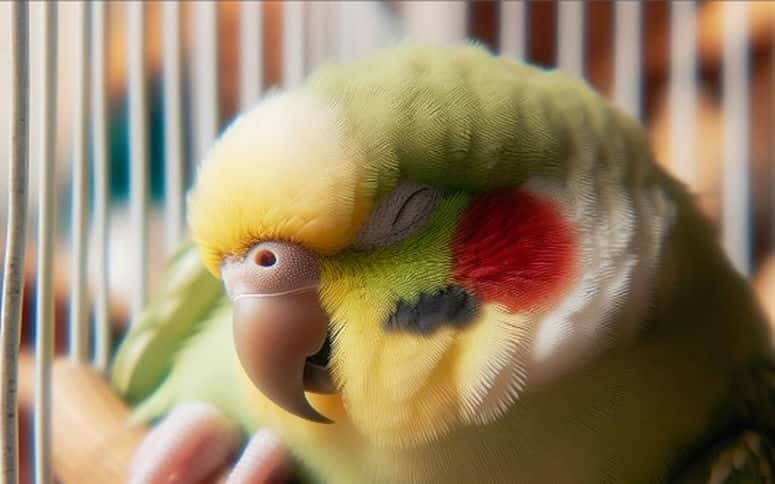
Recognizing the signs of a dying parakeet can be distressing, but knowing these symptoms may help you provide comfort and support during a difficult time. Remember that these signs can vary, and not all of them may be present.
If you notice any of the following signs, it’s essential to seek professional veterinary advice as soon as possible:
| Sign | Description |
|---|---|
| Lethargy | Decreased activity and energy levels. |
| Change in Behavior | Sudden alterations in behavior, such as increased aggression or withdrawal. |
| Loss of Appetite | Significant decrease or complete loss of interest in food. |
| Breathing Difficulties | Labored, rapid, or open-mouthed breathing, indicating potential respiratory issues. |
| Weight Loss | Noticeable and sudden decrease in body weight. |
| Disheveled Feathers | Unkempt, ruffled feathers due to a lack of grooming. |
| Changes in Droppings | Alterations in color, consistency, or frequency of droppings. |
| Difficulty Perching | Struggling to perch or spending more time on the cage bottom. |
| Changes in Vocalization | Changes in normal vocalization patterns, such as increased or decreased noise. |
| Visible Signs of Pain | Limping, favoring one leg, or reluctance to move, indicating potential pain. |
The Importance Of A Clean Cage
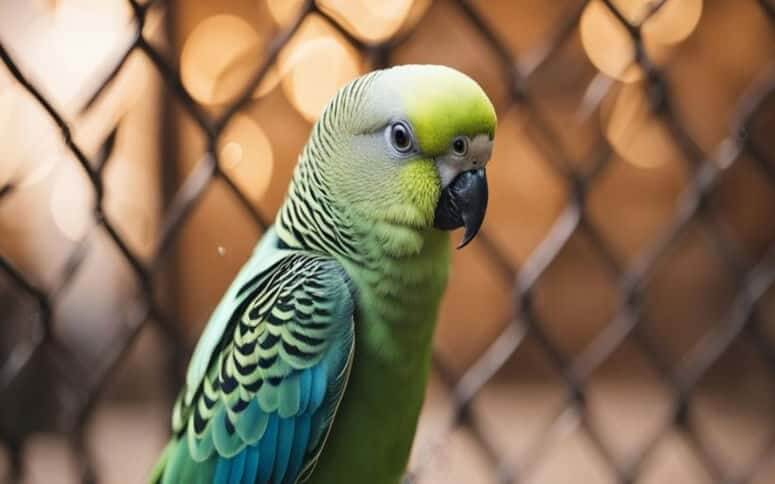
Keeping your parakeet’s home clean is super important. If we don’t keep it clean, our little bird friends can get sick, or even worse. Making sure their cage is clean means they stay happy and healthy.
Why a Spotless Cage Matters
A clean cage isn’t just nice to look at; it’s a must for your parakeet’s health. It keeps germs away and makes a comfy home for them. Here’s why a clean cage is a big deal:
How to Keep the Cage Sparkling
Making sure your parakeet’s cage stays clean doesn’t have to be a chore. Here’s how to do it right:
- Stick to a Cleaning Schedule
Pick a day and time each week to clean the cage well. Keeping on top of cleaning stops dirt and mess from getting out of hand.
- Change the Bedding Often
Swap out the cage’s bedding regularly. Whether it’s paper or something else, fresh bedding keeps things dry and germ-free. Make sure the bedding is safe for birds.
- Wash Food and Water Dishes Every Day
Keep your bird’s eating and drinking spots clean. Wash them with hot, soapy water every day. Make sure they’re totally rinsed to get rid of any soap.
- Clean the Cage’s Bits and Bobs
Use a bird-safe cleaner to wipe down the cage, perches, and toys. This gets rid of germs and dirt. Rinse everything well afterwards.
- Check and Swap Toys and Perches
Keep an eye on toys and perches. If they’re looking rough, swap them out. Clean toys often to stop bacteria.
Following these tips will keep your parakeet’s cage nice and clean. And a clean cage means a happy, healthy bird. Let’s keep our feathered pals chirping with joy.
Creating A Safe And Enriching Environment To Prevent Dying Parakeets in Cage
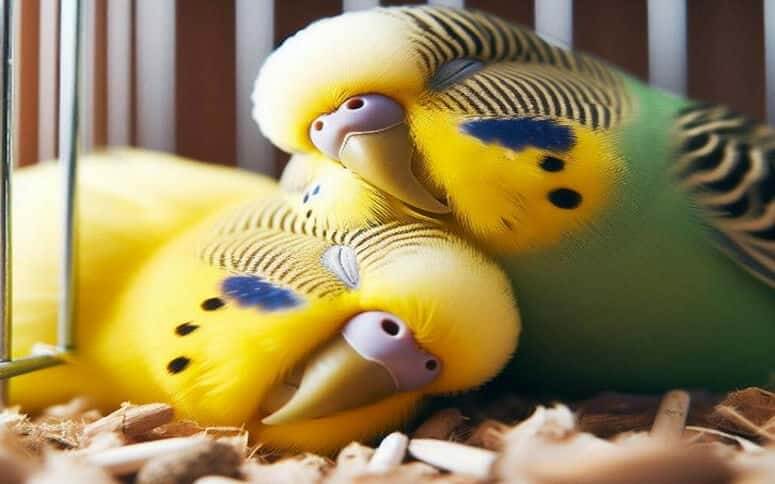
When it comes to keeping pet parakeets, providing them with a safe and enriching environment is crucial. Parakeets are highly social and intelligent creatures, and creating the right habitat for them is essential for their well-being.
Here, I discuss two critical aspects of building a safe and enriching environment for your parakeet: providing proper nutrition and creating mental stimulation.
Providing Proper Nutrition
Proper nutrition plays a vital role in the health and longevity of your parakeet. To ensure your feathered friend stays healthy, it is important to provide a well-balanced diet.
Here are some key points to keep in mind when it comes to your parakeet’s nutrition:
1. Seeds and Pellets: Parakeets require a diet of a mix of high-quality seeds and pellets. These provide essential nutrients and vitamins that are necessary for their overall health.
2. Fresh Fruits and Vegetables: Adding fresh fruits and vegetables to your parakeet’s diet is essential to provide them with additional vitamins and minerals. Some safe options include apples, grapes, carrots, and leafy greens arugula.
3. Water: Always ensure that your parakeet has access to fresh and clean water. Change the water daily and ensure the water dish is easily accessible for your pet.
Creating Mental Stimulation
Parakeets are brilliant birds that thrive on mental stimulation. Providing them with activities that keep them engaged and entertained is essential.
Here are a few ways you can create mental stimulation for your parakeet:
1. Toys and Perches: Offer a variety of toys and perches in your parakeet’s cage to provide them with opportunities for play and exercise. Choose toys that encourage climbing, swinging, and foraging to keep their minds active.
2. Rotation of Toys: Introduce and rotate new toys regularly to prevent boredom. This will keep your parakeet interested and engaged in their environment.
3. Training and Social Interaction: Parakeets are social birds and enjoy interacting with their owners. Spend time playing and training with them daily. Not only will this provide mental stimulation, but it will also strengthen the bond between you and your pet.
Proper nutrition and a mentally stimulating environment ensures that your parakeet thrives and lives a happy and healthy life. Remember, a safe and enriched environment is crucial for the well-being of your feathered friend.
Recognizing Signs Of Budgie Distress
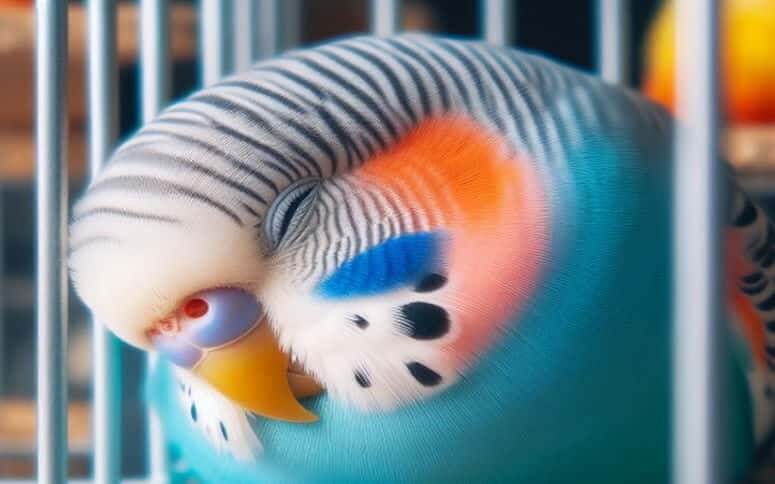
As a bird owner, it is crucial to recognize when your parakeet is experiencing distress. Understanding the signs of distress can help you take prompt action and potentially save your bird’s life.
This section will outline the behavioral changes and physical indicators indicating your parakeet is in distress.
Behavioral Changes
When your parakeet is experiencing distress, there may be noticeable changes in their behavior. Paying close attention to their actions can help you identify these signs.
Here are some behavioral changes to watch out for:
- Decreased appetite or sudden weight loss
- Increased aggression or irritability
- Excessive vocalization or silence
- Withdrawal or decreased social interaction
- Unusual or compulsive behaviors, such as excessive preening or head-bobbing
If you notice any of these behavioral changes in your parakeet, it is essential to investigate further to determine the cause and provide appropriate care.
Physical Indicators
Alongside behavioral changes, physical indicators can also indicate that your parakeet is in distress. By being aware of these signs, you can take immediate action to address any potential health issues.
Look out for the following physical indicators:
| Physical Indicators | Possible Causes |
|---|---|
| Fluffed-up feathers or constantly huddled position | Illness, stress, or cold temperature |
| Visible wounds, sores, or abnormal growths | Injury, infection, or disease |
| Labored breathing or wheezing | Respiratory infection or obstruction |
| Abnormal droppings, such as loose or discolored stool | Digestive issues or dietary problems |
| Red, swollen, or watery eyes | Eye infection or allergy |
If you notice any of these physical indicators in your parakeet, it is crucial to consult a veterinarian who specializes in avian health for a proper diagnosis and treatment plan.
When To Seek Veterinary Help
If you notice any of the following signs or symptoms, it is crucial to seek veterinary help immediately:
- Difficulty breathing
- Extreme lethargy
- Loss of appetite
- Bleeding
- Seizures
- Inability to perch or fly
First Aid For Common Emergencies
In case of common emergencies, you can provide first aid to help stabilize your parakeet before seeking veterinary assistance:
1. Difficulty breathing:
If your parakeet is having trouble breathing, ensure fresh air circulation in the room by opening windows and removing any sources of fumes or pollutants. Place your parakeet in a well-ventilated carrier and transport them to the nearest avian veterinarian as soon as possible.
2. Injury or bleeding:
If your parakeet has a visible injury or bleeding, gently apply light pressure and apply a clean cloth or gauze over the wound. Do not attempt to stop bleeding by using your fingers or blowing on the wound. Contact a veterinarian immediately for further guidance.
3. Seizures:
If your parakeet experiences a seizure, create a calm and quiet environment to prevent further stress. Do not touch or restrain your parakeet during a seizure. Remove any objects that may pose a danger. After the seizure, contact your veterinarian for a thorough evaluation.
4. Inability to perch or fly:
If your parakeet has difficulty perching or flying, create a temporary low perch or provide a towel-lined carrier with soft and stable flooring. Avoid placing your parakeet on high perches or exposing them to strenuous activities. Seek veterinary assistance promptly to identify the underlying cause.
Remember, the above first-aid measures are temporary solutions and should never replace professional veterinary care.
Contact your avian veterinarian for immediate guidance and expert assistance when an emergency occurs. Your feathered friend’s well-being should always be a top priority.
Frequently Asked Questions On Parakeet Dying Bottom Cage
Why Is My Parakeet Sitting At The Bottom Of Its Cage?
Parakeets may sit at the bottom of their cage due to illness, injury, or stress. Observing their behavior, cleanliness, and eating habits is essential to determine the cause and provide appropriate care.
How Can I Tell If My Parakeet Is Dying?
Signs of a dying parakeet include decreased activity, difficulty breathing, loss of appetite, matted feathers, and changes in droppings. If you notice these symptoms, seek immediate veterinary care to assess and treat the bird’s condition.
What Are Common Illnesses That Can Cause A Parakeet To Die?
Parakeets can suffer from various illnesses, including respiratory infections, gastrointestinal problems, and liver disease. Other factors such as parasites, poor nutrition, or environmental issues can also contribute to a parakeet’s health decline.
How Can I Prevent My Parakeet From Getting Sick?
To keep your parakeet healthy, provide a balanced diet, clean water, regular exercise, and a clean living environment. Avoid exposing your bird to extreme temperatures, drafts, and harmful chemicals. Regular veterinary check-ups and vaccinations can also help prevent illnesses.
Sum Up
To ensure the well-being of your parakeet, it is crucial to pay attention to their behavior and living conditions.
Keeping the bottom of their cage clean and providing a safe environment is essential for their health. Remember to monitor their diet, exercise, and social interactions.
By following these simple steps, you can ensure your feathered friend’s happy and healthy life.
Hello Dear, I'm Poli Kolymnia, owner of many birds (including budgies).
With a deep passion for these feathered companions, I'm here to share my expertise and extensive knowledge on birds care.
My articles cover essential topics like diet, housing, care, and health, providing practical tips to help you create a happy and thriving environment for your birds.
